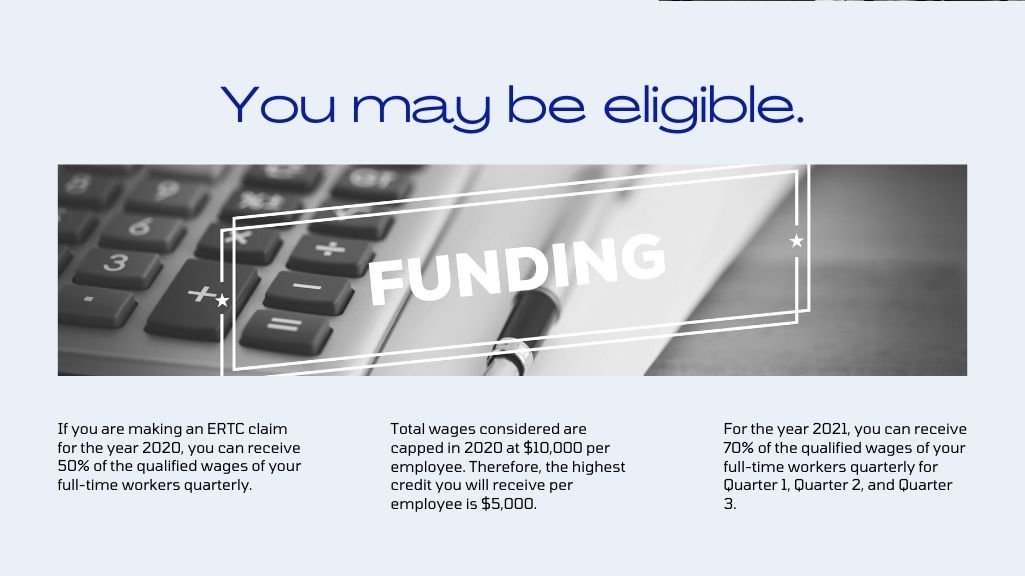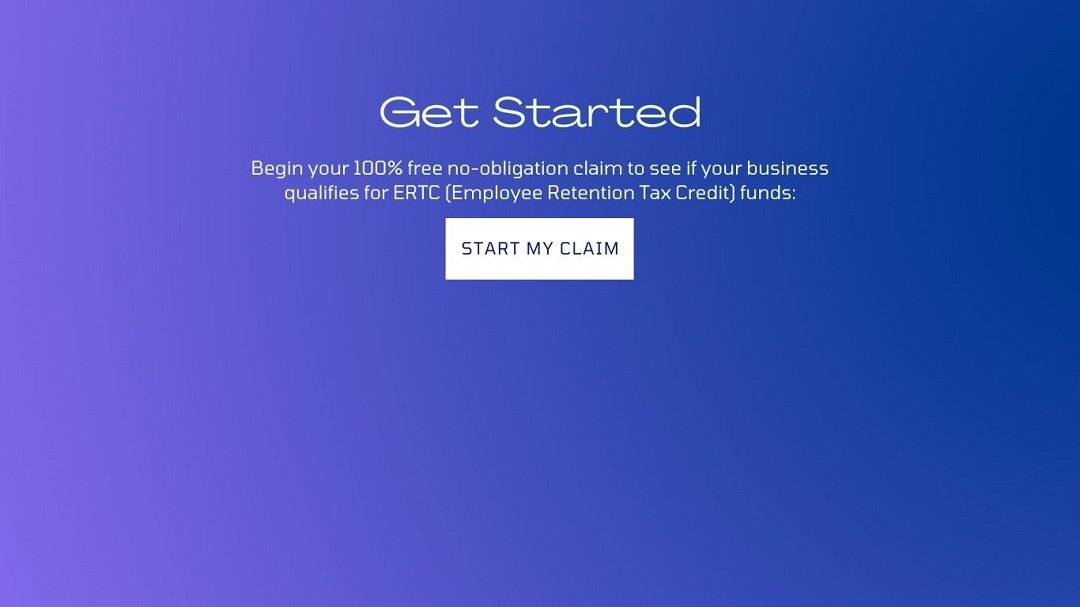Employee retention tax credits are a great way to help employers retain their employees during difficult economic times. But, it’s important for employers to understand if these credits are taxable or not.
This article will discuss whether the employee retention credit ERTC is taxable and how this affects businesses’ financial obligations.
The COVID-19 pandemic has had an unprecedented impact on businesses across all industries. Many businesses have taken advantage of government programs like the employee retention tax credit (ERTC) in order to stay afloat and keep their staff employed. However, it’s essential that business owners know when these credits are considered taxable income so they can plan accordingly.
In this article we’ll explore the implications of ERTC taxation and what businesses need to prepare for when claiming them.
What Is the Employee Retention Tax Credit?
The Employee Retention Tax Credit (ERTC) is a key part of the Coronavirus Aid, Relief, and Economic Security Act (CARES), providing employers with assistance in keeping their employees on payroll during this difficult time.
According to the U.S. Chamber of Commerce, nearly 80% of small businesses are currently taking advantage or planning to take advantage of this tax credit.
It enables companies to receive up to $5,000 for each employee they retain through 2020.
This program allows employers who have seen significant revenue loss due to COVID-19 to be reimbursed for qualified expenses related to maintaining employment levels in order to keep their business afloat.

For example, if an employer pays wages between March 13th and December 31st that qualify under ERTC criteria, they can claim a refundable tax credit equal to 50% of those wages paid per employee per quarter up to $10,000 in total wages per employee.
Employers should consider applying for the ERTC as soon as possible in order to get ahead of competition and secure their share of available reimbursements before funds run out.
Moving forward then, it’s important to understand who would be eligible for these credits so businesses can plan accordingly.
Who Is Eligible for the ERTC?
The Employee Retention Tax Credit (ERTC) is a valuable incentive designed to help employers keep their employees on the payroll during the pandemic. It’s an attractive option for many companies, as it can significantly reduce tax liability while helping to retain staff in times of economic uncertainty. But who exactly is eligible?
To qualify for ERTC benefits, employers must have either fully or partially suspended operations due to government orders related to COVID-19; OR experienced a significant decline in gross receipts compared to the same quarter in 2019. If your business has been impacted by these circumstances, you may be able to take advantage of this credit.
It is important to note that only wages paid after March 12th and before January 1st 2021 are eligible for ERTC reimbursement. Additionally, certain businesses such as living facilities and governmental organizations are excluded from participation in the program.
Understanding all eligibility requirements is key when considering whether or not to apply for ERTC. With this information at hand, we can move onto exploring how does the ERTC work?
How Does the ERTC Work?
According to the IRS, around 3.9 million employers took advantage of the Employee Retention Tax Credit (ERTC) in 2020 alone. That staggering number speaks to just how effective this program has been for businesses and their employees during these difficult times.
Here are three key points that provide an overview of the ERTC:
-The ERTC provides a refundable tax credit worth up to $5,000 per employee per quarter;
-Eligible employers must have had operations partially or fully suspended due to government orders related to COVID-19, or experienced a significant decline in gross receipts;
-Qualifying wages include both health benefits and qualified sick leave wages paid after March 12th, 2020 and before January 1st 2021.
With so many companies utilizing it, the ERTC is making a major impact on helping keep people employed while also providing financial relief to those businesses affected by the pandemic.
Moving forward, it’s important to understand how this works when filing taxes—especially if you want your organization to benefit from credits like this one. To do that effectively means understanding whether the ERTC is taxable or not.
Are ERTC Credits Taxable?
The Employee Retention Tax Credit (ERTC) is a valuable economic recovery tool that can help businesses offset the cost of wages and health benefits they provide to their employees.
Under this program, employers are eligible for up to $5,000 per employee in tax credits if certain criteria are met.
Now, it’s important to consider what the tax implications might be when taking advantage of these credits. When claiming ERTCs, there is no need to pay income taxes on those credits because they are nontaxable; however, other financial impacts may still be present.
For example, any ERTC amounts claimed by an employer would reduce its taxable income, which could cause a corresponding increase in payroll taxes or decrease in deductions or credits related to the employer’s business activities. Furthermore, depending on how much credit was applied against the employer’s federal employment taxes, some states may not allow them to use all of their state-level unemployment insurance/employment training contributions as a deduction against corporate income taxes due.
If an employer claims more ERTC than it is entitled to receive under IRS regulations then it will owe interest and penalties at varying rates based upon whether the return was timely filed or amended after filing with additional information.
To avoid such issues occurring it is essential for employers who wish to claim ERTCs properly document all transactions relating to their eligibility for and application of these credits so that errors don’t occur down the line.
With careful planning and monitoring of these types of items businesses can ensure that they get maximum benefit from using ERTCs without having to incur extra costs due to misapplication or overclaiming of them.
With proper management and understanding of the potential pitfalls associated with claiming ERTCs , businesses have everything they need to take full advantage of this potential windfall while avoiding costly mistakes along the way.
What are the tax implications for businesses interested in applying for an Employee Retention Tax Credit?
What Are the Tax Implications for Businesses?
The employee retention tax credit (ERTC) is a powerful tool in the hands of business owners, offering financial relief and security to their employees during difficult times. It’s like a life preserver thrown out into the churning waters of an uncertain economy – but what are its implications for businesses?
For business owners looking to leverage the ERTC, it can be both a blessing and a curse – while it offers welcome fiscal assistance and peace of mind, there are also certain tax considerations they must take into account before claiming it.
If not managed carefully, businesses may find themselves stumbling over hidden pitfalls that could cost them more than just money.
Navigating these potential risks requires expertise and foresight; one misstep could mean paying much higher taxes when filing returns or even triggering an audit from the IRS.
For this reason, business owners should engage with experienced professionals when planning how to use this benefit responsibly – taking advantage of the support available without putting their enterprise at risk.
With the right approach, employers can ensure they’re making long-term investments rather than short-term gains.
As such, savvy entrepreneurs will know exactly how to move forward with confidence as they continue on their journey towards success.
How Can Businesses Claim the ERTC?
The tax implications for businesses can be significant when it comes to employee retention. It is important for businesses to understand how the Employee Retention Tax Credit (ERTC) works and what benefits they could receive from claiming it.
Businesses may qualify for an ERTC if their operations were fully or partially suspended due to governmental orders, or they experienced a decline in gross receipts of 50 percent or more compared to the same quarter in 2019.
To claim the credit, employers must submit Form 941-X with all applicable supporting documents. Additionally, employers should complete IRS Form 7200: Advance Payment of Employer Credits Due To COVID-19. This form allows employers to cover payroll costs using this credit without waiting on reimbursement until filing taxes at year’s end.
It is important that businesses take advantage of any available credits that can help them remain solvent during these times as well as benefit employees who are still employed. Understanding the rules of eligibility and taking the necessary steps to collect these credits will provide financial relief which can be put towards other business needs such as enhancing safety protocols, purchasing additional supplies, or even expanding services and staff members if needed.
With this information in mind, let us now look into what are some of the benefits associated with claiming the ERTC?
What Are the Benefits of the ERTC?
The Employee Retention Tax Credit (ERTC) can bring a range of benefits to businesses that have been impacted by the coronavirus pandemic. Most notably, it allows eligible employers to receive up to $5,000 per employee in refundable credits for wages paid between March 12th and December 31st 2020.
This credit is designed to reduce payroll costs while providing financial relief during these challenging times. In addition, ERTC also provides additional incentives such as reimbursing employers 50% of qualified health plan expenses if an employer already received credits through the Families First Coronavirus Response Act (FFCRA).
This credit is not taxable so employees do not need to count it as part of their income when filing taxes at year end. Overall, the ERTC offers valuable benefits for those who are struggling with reduced revenues due to COVID-19 related restrictions and closures.
It’s important for business owners to understand all the details associated with this tax credit before filing in order maximize its potential benefit. With that said let’s turn our attention now to what other credits may be available?
What Other Credits Are Available?
The Employee Retention Tax Credit (ERTC) is a great way for employers to retain employees and receive some tax relief. By providing an incentive, businesses can continue operations and retain their workforce during the economic downturn caused by COVID-19. Although this credit has been beneficial, other credits may also be available to help employers and workers through these trying times.
One such credit is the Families First Coronavirus Response Act (FFCRA). This act helps offset certain expenses related to employee sick leave due to coronavirus illness or quarantine orders; however, it only applies to companies with fewer than 500 employees.
The Paycheck Protection Program (PPP), on the other hand, provides loans that can be partially forgiven when used for payroll costs and mortgage interest payments among other qualifying business expenses. It’s important for business owners to explore all options in order to maximize returns from federal programs during this challenging time.
Lastly, there are several state-level incentives available as well. For example, some states have enacted unemployment insurance reforms which provide additional benefits beyond traditional unemployment compensation. Additionally, various localities offer grant funding opportunities that could potentially benefit small businesses struggling financially due to the pandemic. All of these resources should be taken into account when determining what kind of aid is best suited for a given situation.
With many different types of assistance now available at both the federal and state levels, businesses should take full advantage of each program as needed in order to stay afloat during this period of uncertainty. But what does the future hold for ERTC?
What Is the Future of the ERTC?
The Employee Retention Tax Credit (ERTC) has provided a much needed financial relief to the thousands of businesses and millions of employees who have been affected by the COVID-19 pandemic. Looking ahead, it is clear that the ERTC will play an important role in helping to rebuild our economy.
There are several factors that will affect the future of the ERTC:
- The length of time it will be available:
- If all goes according to plan with regards to vaccinations and other public health measures, it’s likely that the government may eventually lift restrictions on some parts of society before others. This could mean that certain businesses or industries would no longer need support from programs like the ERTC even if others still do.
- On the other hand, if there are any delays in meeting public health objectives, then it’s possible that emergency funding such as this tax credit might remain in place for longer than expected.
- Whether or not additional legislation is passed:
- Congress could decide to extend or expand upon existing ERTC policies through new legislation. This could include making changes to eligibility requirements or increasing how much a business can claim back in terms credits.
- It’s also possible that they might choose not to make any further amendments, which means whatever rules were put into place originally would stay intact until their expiration date arrives.
- How well employers comply with guidelines:
- In order for companies to take advantage of this incentive program, they must adhere strictly to all regulations set forth by federal authorities. This includes filing paperwork accurately and submitting relevant documents in a timely manner.
- If employers fail to follow these instructions, then they run the risk of being denied access to benefits from this initiative or having those already received taken away entirely.
Given these considerations, it appears as though many businesses continue relying on the ERTC at least until its scheduled end date later this year – however what happens after that point remains uncertain due in part to constantly changing economic conditions around us today.
Conclusion
The Employee Retention Tax Credit is an invaluable tool for businesses struggling to stay afloat during the pandemic. It allows employers to save on taxes, which can then be put back into their business and used to retain employees or hire new ones.
This credit has been a lifesaver for many companies that have experienced financial hardship due to the economic downturn caused by COVID-19. With its benefits far outweighing its drawbacks, it’s no wonder so many businesses have taken advantage of this generous tax break.
As they say, when life gives you lemons, make lemonade: with ERTC credits, businesses are making sweet success out of sour times!




